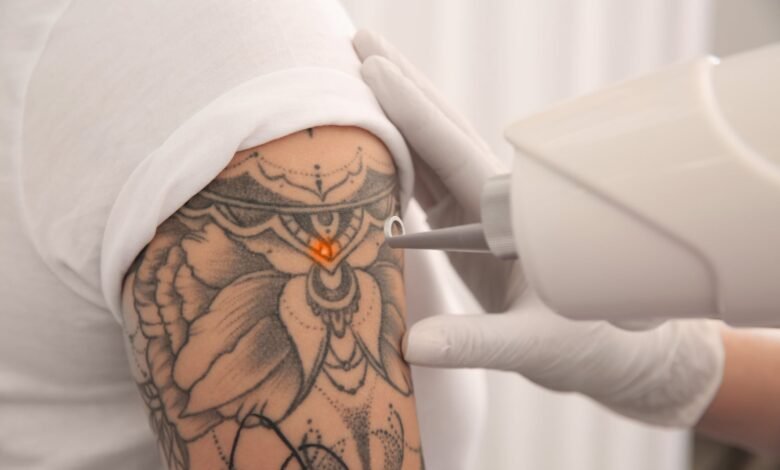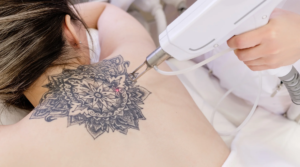
laser tattoo removal in Abu Dhabi is a popular method for removing unwanted tattoos, but the healing process is crucial for ensuring the best results and minimizing any potential complications. Proper aftercare following the procedure is vital for helping the skin heal, preventing infections, and achieving optimal results. This guide outlines essential aftercare tips for laser tattoo removal in Abu Dhabi to ensure your tattoo removal journey is smooth and effective.
Understanding the Healing Process
After a laser tattoo removal session, the treated area will undergo a natural healing process. The laser breaks down the ink particles in the skin, and your body’s immune system gradually works to remove them. This process takes time, and how you care for the area in the days following the treatment will influence the speed and quality of healing.
Key Aftercare Tips for Optimal Results
Keep the Treated Area Clean and Dry
The first step in aftercare is to keep the treated area clean and dry. Immediately after the procedure, the skin may be red, swollen, or have small scabs. It’s important not to touch, scratch, or pick at the area to avoid infection and scarring. Clean the area gently with lukewarm water and mild soap. Pat it dry with a clean towel instead of rubbing it to avoid irritating the skin.

Apply an Antibacterial Ointment
Once the area is clean, apply a thin layer of an antibacterial ointment or gel as recommended by your healthcare provider. This helps to protect the treated skin from infection and promotes healing. Be sure to follow the exact instructions provided, as applying too much ointment may clog the pores, while too little might not provide sufficient protection.
Avoid Direct Sun Exposure
Exposure to direct sunlight after laser tattoo removal can cause hyperpigmentation, scarring, or prolonged healing. It is essential to protect the treated area from the sun by wearing sunscreen with a high SPF (at least 30) or covering the area with clothing. Avoid tanning beds, and if you need to be outdoors, use a hat or clothing to shield the area from UV rays.
Do Not Scratch or Pick at the Treated Area
As the skin heals, you may experience scabbing, itching, or peeling. While this is a natural part of the healing process, it is crucial not to scratch or pick at the area. Scratching can cause scarring, infection, or disruption of the healing process, potentially affecting the results of the treatment. If the itching becomes unbearable, consult with your practitioner for advice on how to manage the discomfort.
Avoid Hot Water and Saunas
Hot water can irritate the treated skin and cause discomfort or delay the healing process. For the first few days after your session, avoid hot showers, saunas, or hot tubs. Instead, opt for lukewarm water when bathing or washing the treated area to prevent further irritation.
Refrain from Intense Physical Activity
It is advisable to avoid strenuous physical activities for at least 48 hours after your laser tattoo removal session. Sweating can increase the risk of infection or irritation to the treated area. Additionally, exercises that may cause friction or pressure on the treated skin should be avoided until the area has fully healed.
Stay Hydrated and Maintain a Healthy Diet
Healing from tattoo removal requires energy and proper nutrients. Drinking plenty of water helps maintain hydration, which supports the body’s healing process. Eating a well-balanced diet rich in vitamins, especially those that promote skin health (such as vitamin C and vitamin E), can also help speed up the healing process.
Use Cold Compresses for Swelling
It’s normal to experience some swelling or discomfort in the treated area after laser tattoo removal. Applying a cold compress (a clean cloth soaked in cold water or an ice pack wrapped in a towel) can help reduce swelling and soothe the area. Avoid applying ice directly to the skin to prevent frostbite.
Be Patient and Allow Time for Healing
The healing process after laser tattoo removal takes time. Depending on the size and depth of the tattoo, multiple sessions may be required to completely remove the ink. After each session, the skin will gradually heal, and you may notice the tattoo fading over time. Patience is key to achieving the best results, and you should follow your aftercare instructions diligently between sessions.
When to Seek Professional Advice
While most of the healing process is straightforward, there are times when you may need to contact your practitioner. If you notice any of the following signs, it’s important to seek advice:
- Increased redness or swelling: If the swelling persists or worsens beyond the first few days.
- Signs of infection: Pus, excessive redness, heat, or pain may indicate an infection.
- Scarring or abnormal skin texture: If you notice unusual scarring, thickening of the skin, or discoloration that doesn’t seem to improve.
Final Thoughts
Laser tattoo removal is an effective way to eliminate unwanted tattoos, but the success of the procedure largely depends on how well you care for your skin afterward. By following these aftercare tips and being patient during the healing process, you can help ensure that your tattoo fades away smoothly without complications. Always follow the specific aftercare instructions provided by your practitioner and consult them if you have any concerns or questions.



